What are the uses of alumina ceramic flanges
Alumina ceramic flange is a high-performance industrial component widely used in multiple industries due to its excellent high temperature resistance, corrosion resistance, wear resistance, and insulation performance.
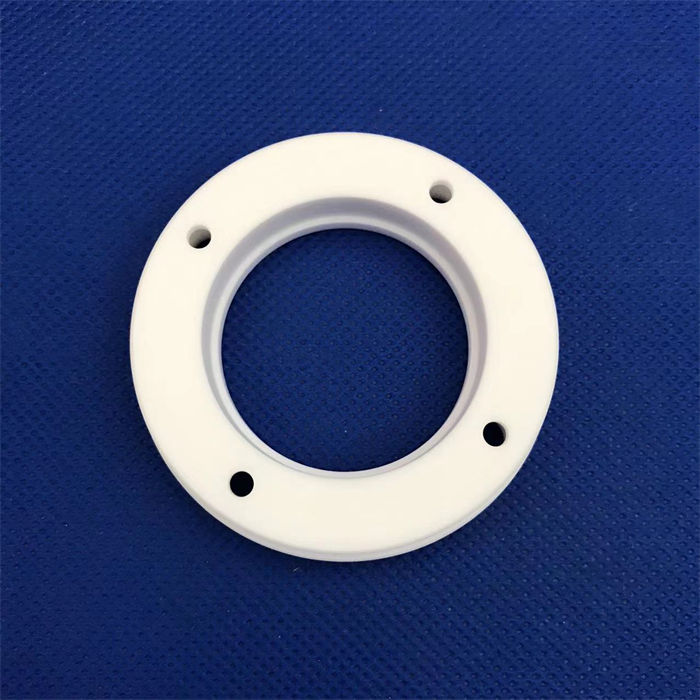
Basic characteristics of alumina ceramic flanges
Before introducing its use, let’s first understand the core characteristics of alumina ceramic flanges, which make them stand out in many industrial applications:
-High hardness and wear resistance: Hardness second only to diamond, suitable for high wear environments.
-High temperature resistance: It can work stably in high temperature environments above 1600 ℃.
-Corrosion resistance: It has strong resistance to acids, alkalis, and chemical solvents.
-Insulation performance: Excellent electrical insulation, suitable for high voltage and high frequency environments.
-Low thermal expansion coefficient: The size is stable and not easily deformed when the temperature changes.
These characteristics make alumina ceramic flanges an ideal choice for many harsh working conditions.
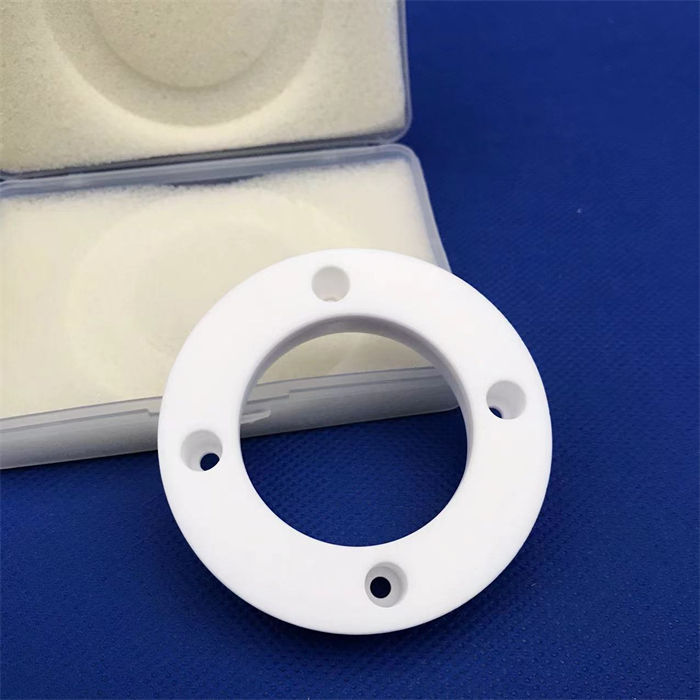
The main uses of alumina ceramic flanges
Chemical industry
Application scenarios:
-Reactor and pipeline connection
-Transportation of strong acid and strong alkali media
-Corrosive gas treatment system
Problem solved:
-Traditional metal flanges are prone to corrosion in highly corrosive environments, leading to leakage or failure, while alumina ceramic flanges can operate stably for a long time, reducing maintenance costs.
-Suitable for high-purity chemical production, avoiding metal ion pollution.
Semiconductor and Electronics Industry
Application scenarios:
-High purity gas delivery system (such as wafer manufacturing)
-Vacuum equipment sealing
-Insulation support for high-frequency electronic components
Problem solved:
-Metal flanges may introduce impurities that affect semiconductor purity, while ceramic flanges can ensure high cleanliness.
-Excellent insulation performance can prevent high-voltage breakdown and improve equipment safety.
Electricity and Energy Industry
Application scenarios:
-High voltage insulation sleeve
-High temperature thermocouple protection
-Radiation resistant components of nuclear power plants
Problem solved:
-In high-voltage transmission systems, ceramic flanges can effectively isolate current and prevent short circuits.
-The radiation resistance makes it suitable for nuclear energy equipment and extends its service life.
Machinery and Manufacturing Industry
Application scenarios:
-High precision bearing seat
-Wear resistant conveying pipeline
-Laser cutting equipment components
Problem solved:
-Ceramic flanges are more wear-resistant than metal in high-speed mechanical equipment, reducing the frequency of replacement.
-Low friction coefficient can improve mechanical efficiency and reduce energy consumption.
Environmental Protection and Waste Gas Treatment
Application scenarios:
-Flue gas desulfurization (FGD) system
-High temperature exhaust gas discharge pipeline
-Connection components of garbage incinerator
Problem solved:
-Traditional metal flanges are prone to corrosion in acidic flue gas, while ceramic flanges can resist corrosion for a long time and reduce maintenance costs.
-The high temperature resistance makes it suitable for extreme environments such as incinerators.
Medical and laboratory equipment
Application scenarios:
-High precision analytical instruments
-Bioreactor sealing
-High temperature sterilization equipment
Problem solved:
-Non polluting, resistant to chemical corrosion, suitable for sterile environments.
-Ceramic flanges are more durable than plastic or metal in high-temperature and high-pressure sterilization equipment.
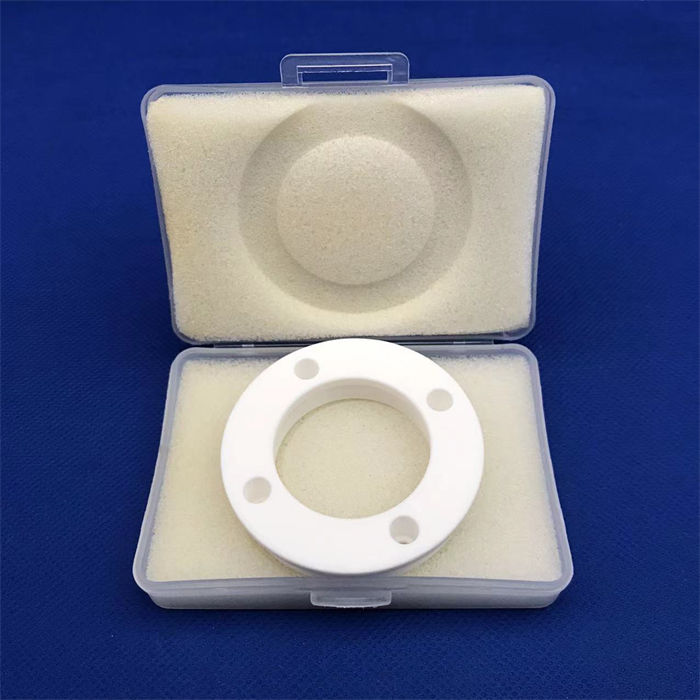
Summary of the advantages of alumina ceramic flanges
Chemical industry: corrosion-resistant, high-purity to reduce leakage and avoid pollution
Semiconductors: high cleanliness, insulation to improve yield and prevent breakdown
Electricity: High voltage resistance, radiation resistance, enhanced safety, and extended lifespan
Mechanical: High hardness, wear-resistant to reduce wear and improve efficiency
Environmental protection: high temperature resistance, acid resistance, suitable for harsh exhaust gas environments
Medical: Biocompatibility, sterilization resistance to ensure sterility and improve reliability
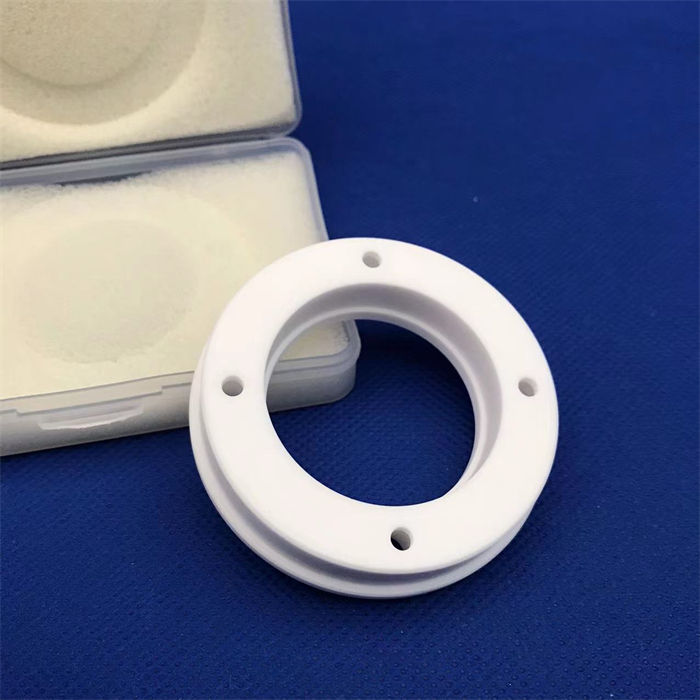
How to choose the appropriate alumina ceramic flange?
When making a purchase, the following factors should be considered:
- Working environment (temperature, corrosiveness, pressure, etc.)
- Dimensional accuracy (ensuring compatibility with pipelines or equipment)
- Surface treatment (polishing, coating, etc. affecting performance)
- Installation method (flange connection type, such as flat welding, butt welding, etc.)
Suggest communicating with professional suppliers and customizing solutions based on specific needs.
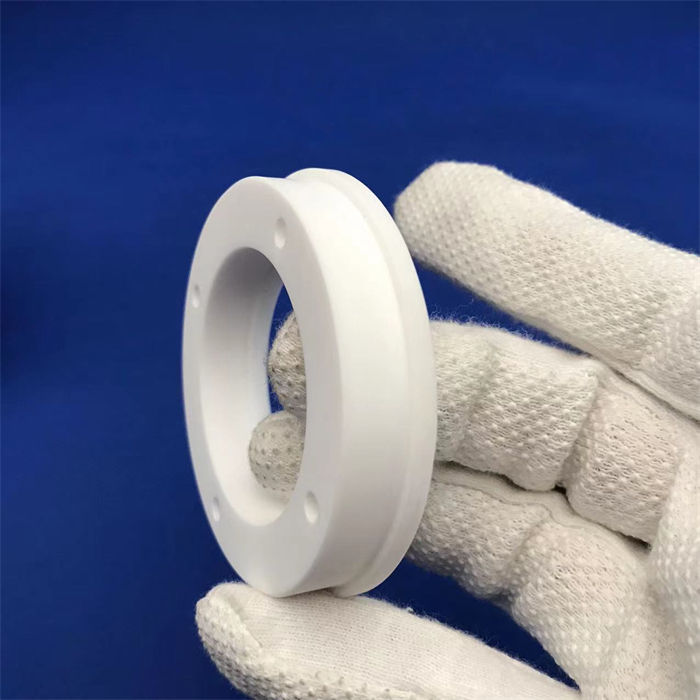
Alumina ceramic flanges play a key role in various fields such as chemical, semiconductor, power, machinery, environmental protection, and medical industries due to their excellent high temperature resistance, corrosion resistance, wear resistance, and insulation performance. It not only solves the vulnerability problem of traditional metal flanges in harsh environments, but also improves the reliability and service life of equipment. For more detailed technical parameters or application cases, please feel free to consult professional ceramic flange suppliers!
Brudeze Ceramics supplies and sells a wide range of high-quality quartz glass, including alumina ceramics, zirconia ceramics, silicon nitride ceramics, aluminum nitride ceramics, silicon carbide ceramics, boron carbide ceramics, bioceramics, machinable ceramics, etc. We can meet the customization requirements of various ceramic products.
PREVIOUS:What are the difficulties in processing alumina ceramic flanges
NEXT:Comparative analysis of cost between alumina ceramic valve plate and metal valve plate
CATEGORIES
LATEST NEWS
- What are the advantages of ...
- The manufacturing method of...
- Application scope of zircon...
- What are the difficulties i...
- What are the advantages of ...
- Application of Zirconia Cer...
- What are the applications o...
- What are the process method...
- What are the applications o...
- Where is the wide applicati...
